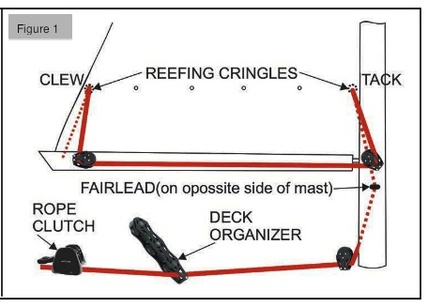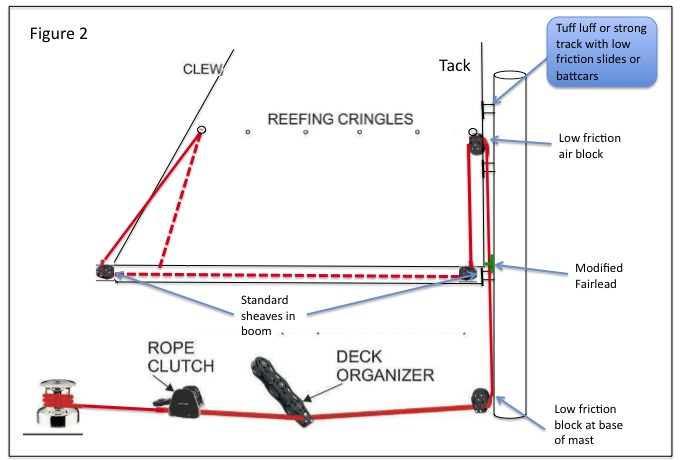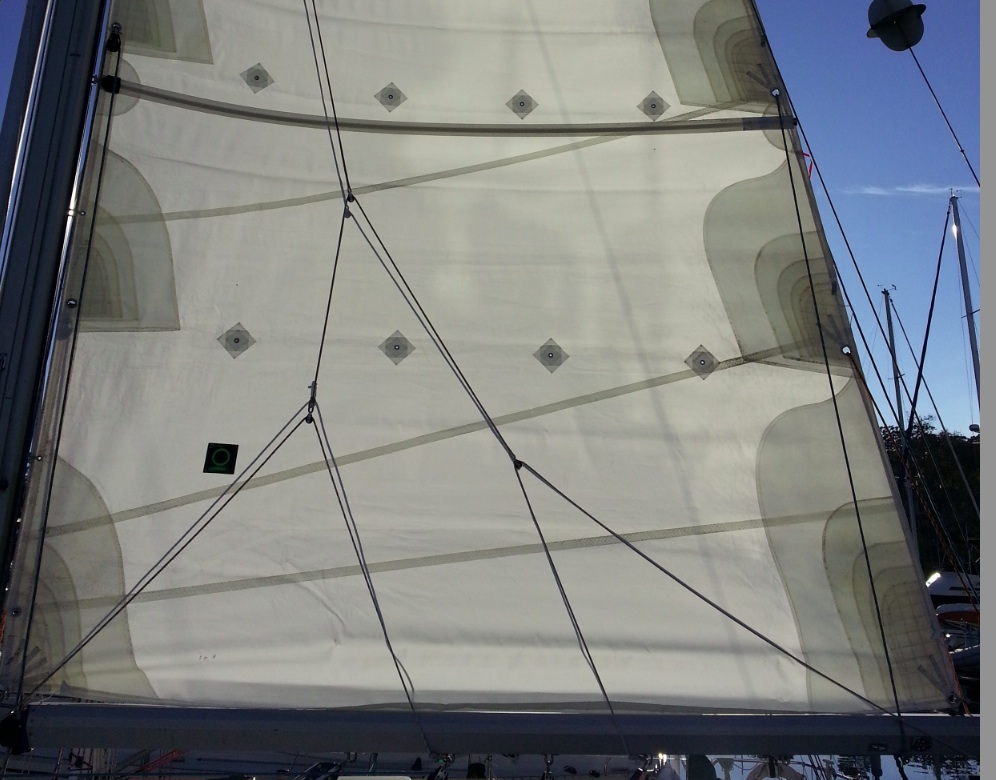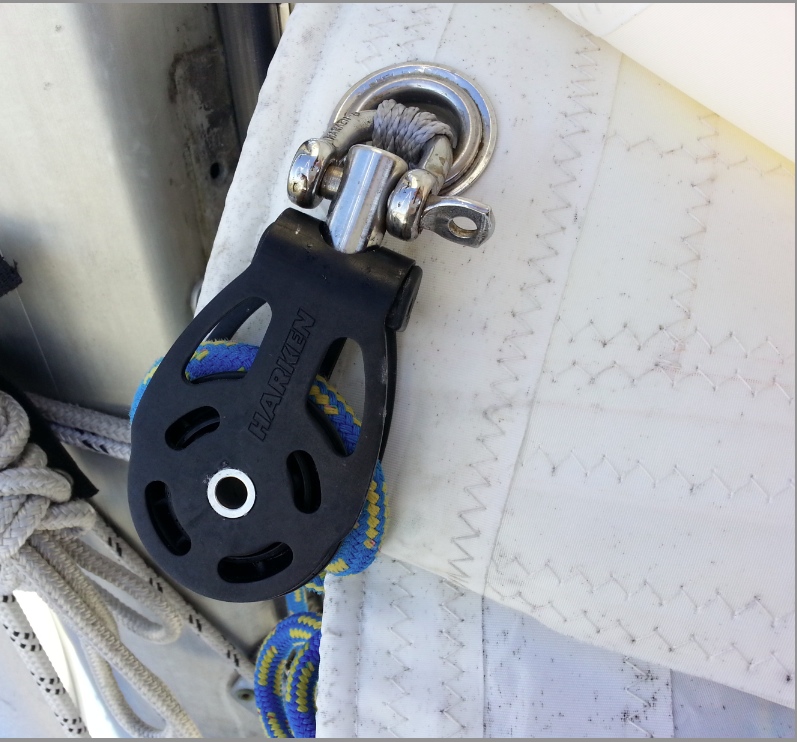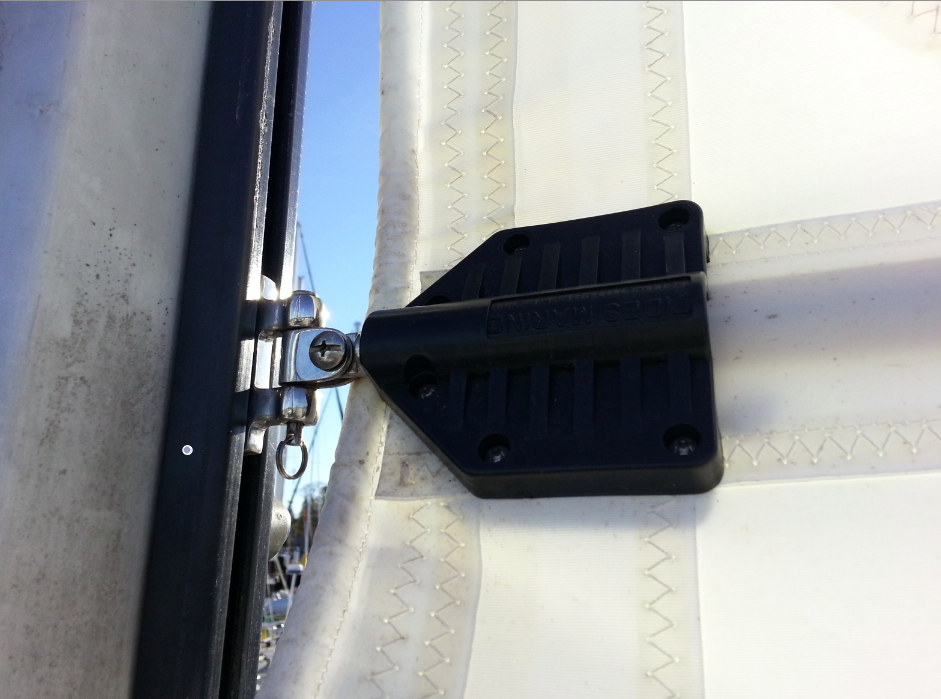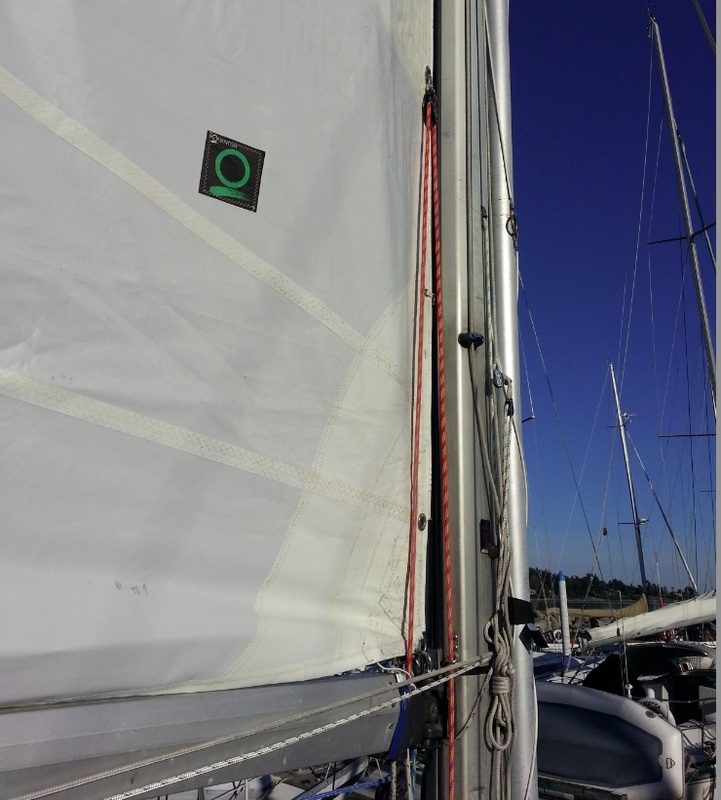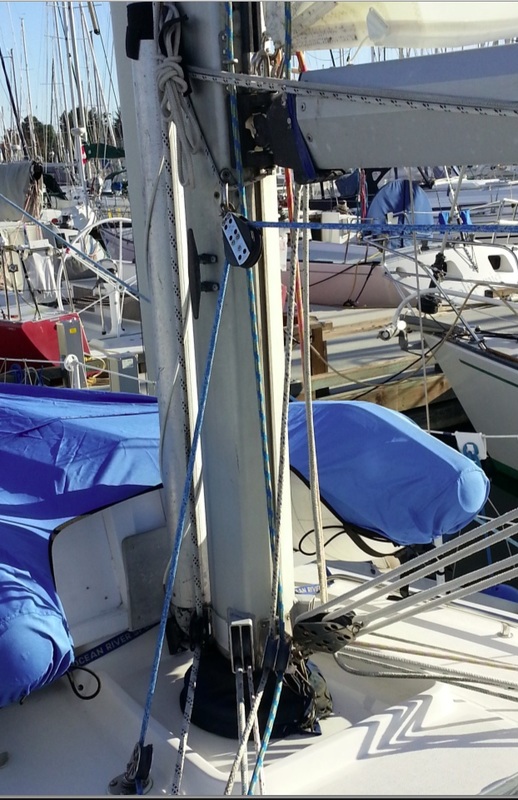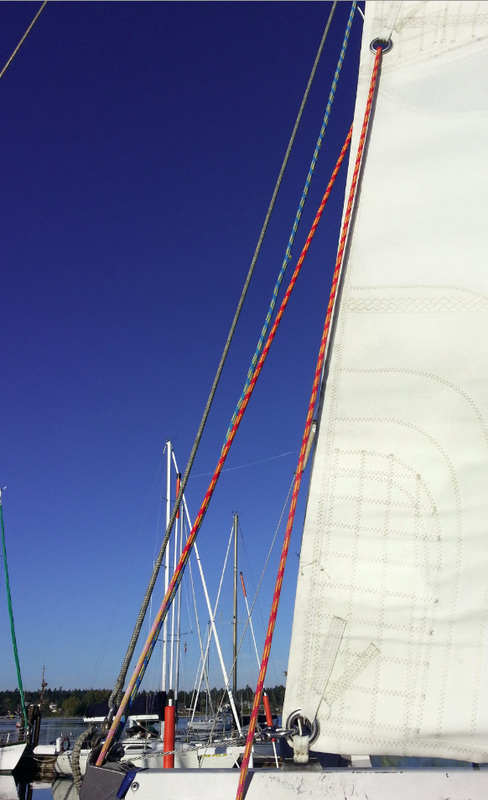So finally.... after much trepidation I got around to writing this... Mostly it was held up by the lack of a calm day to raise the Main Sail to get pictures while tied to the wharf. But I admit I did also procrastinate, and golf, travel, sail etc, but I digress. To Begin, Summer Snow's current Single LIne Reefing system came about when I added new sails in 2012. At that time I had Alex Fox from Trotac (then at Quantum) and Brent Jacobi (Blackline) recommend how to deal with reefing because the new Main is both deeper and roachier than the standard Main. But first lets start with the single line reef system. Figure 1 below shows a typical single line reefing system for the first reef in a main.
The final configuration from Summer Snow differs from this configuration in a couple of way that may seem picky at first blush, but are actually important changes to reduce stress on the mast,sail, boom and lines. Firstly, I modified the fairlead on the mast.... after pulling a block off the mast. It turns out that if you set it up like figure 1 above the reef line is tight on one tack, and then you tack over... you overload the line, the fairlead and the entire system. I now have a fairlead at the aft part of mast which leads the reef line directly to a block that swivels at the base of the mast. Does not matter which tack you are on. Secondly, I run the single line reefs to the end of the boom so that they act as effect outhauls as well as reefs for each reef point. Thirdly, I added a light weigh block to the tack of the reefs fitted to the reef cringle so that the line runs free and easy. Fourth, I put in a tough luff with low friction cars at the mast so the sail drops quickly and easily to the reef point. Finally, I improved the lazy jacks to cradle the sail so I usually don't have to use reef ties. See figure two below.
As you can see the changes are small but they result in a much more effective system that is fast, reliable, and effective. One last important thing I did was to switch to high strength thinner line which also adds to the efficiency of the blocks. After tweaking this system over 2 years I think I now have it to a point where I don't have to leave the cockpit to quickly reef early and reef often. It keeps Gail happy and the boat sailing flat and fast. The following pictures show the various aspect of the system beginning with a picture from the port side of both the first and second reefs with the lazy jacks deployed.
The image above shows the entire system at the tack end of the sail you can see the lightweight block at the top left with the second reef run through. At the clew you see both the first and second reefs coming from the aft end of the boom to the cringles and then back down to the boom aft of the cringles so the reef lines act as outhauls on the sail once the reef is in. The retractable jack lines catch and control the sail minimizing the need for reef ties. Below is a close up of the light weight low friction block.
Reducing of the friction on the lines is crucial as is increasing the ease with which the sail can be lowered. Below is a close up of the teflon luff (could be Harken Battcar, Tuff Luff or Strong Track) and slide at the Batten with integrated swivel to allow the sail to flake easily.
Regardless of what slide system is chosen... its important realize that you will need to either revamp your existing mainsail or wait as I did until you are purchasing a new Mainsail and incorporate it into the design and delivery. Below is an image of the 1st reef at the tack showing, the exit from the boom using the existing sheave, the lightweight block on the sail and the fairlead on the aft of the mast (slightly obscured by the retracted jacklines. Note that I left the horns on the boom so I can use them with the 3rd reef (in case hell ever freezes over.... or I go offshore).
The following image is a view on the port side of the 2 reef from the fairlead down to the block at the base of the mast. The reef line is blue with yellow flecks. The block at the base of the mast is a shaeffer double ball bearing block. The whole thing is a bit over engineered. In keeping with the whole concept of a CS36T.
The next image is a view of the clew end of the 1st reef. Here you can see the reef line exiting the sheave at the aft end of the boom then running up to the aft cringle and then down to boom. You can see from the line angles that this gives an effective reef and outhaul.
Thats the end of the images and my simple description of the implementation on Summer Snow. As a final comment, I would like to make it clear that a better reefing system was crucial after I increased the sail area of the mainsail. Instead of reefing at 18 knots I now reef at 16 knots, which means I do the first reef quite often. The plus side is that with the bigger Main and Genoa I am sailing when a lot of other people are motoring. I would rather be sailing so I will take the slight increase in work as a trade off to less engine noise. Of course it took planning on my part and good execution from the sail maker and the rigger but the result was better overall performance of the boat with added safety for the crew. Its all good.

